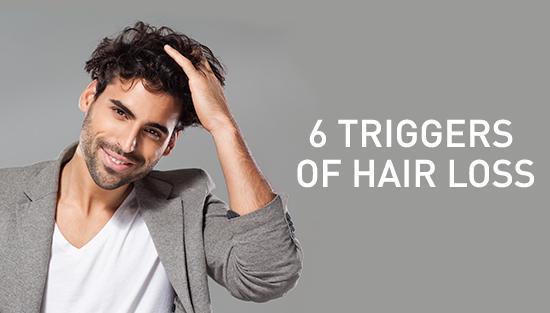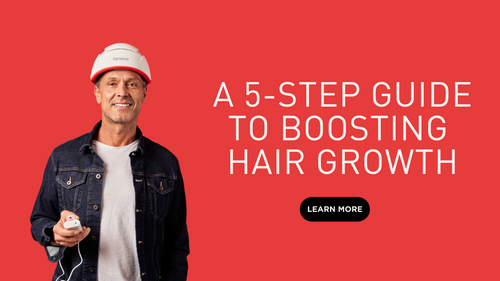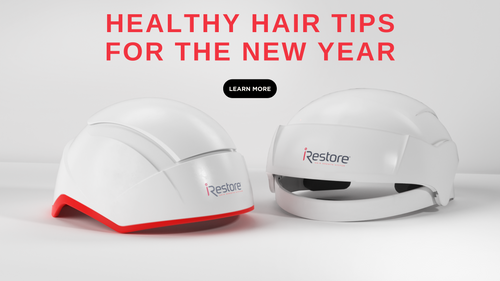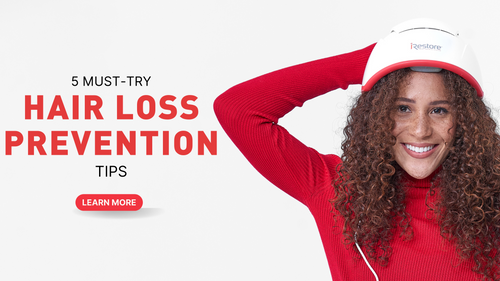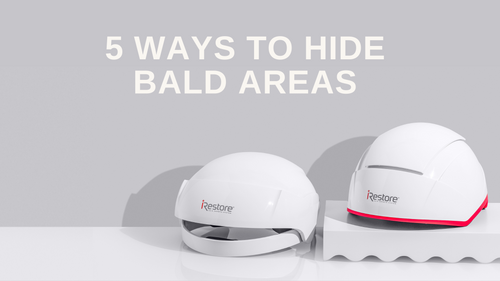
Many people experience hair loss, but most people don’t talk about it, or even know the reason why their hair is falling, thinning, or disappearing. It’s a hard struggle to think or talk about, and even harder to come to terms with.
The good news is that you are not alone. Hair loss affects over 80 million Americans both men and women. Hair follicular challenges start to appear for 40% of men by age 35, and women by the age of 40. That percentage increases to over 70% (almost double!) for men age 80 and women age 60.
The month of August is declared Hair Loss Awareness month by the American Academy of Dermatology. The goal of this national event is to provide education about hair loss (causes and best forms of restoration), and empower those who are suffering to be proactive and realize they are not alone.
Here are some common causes of hair loss:
1. ANDROGENETIC ALOPECIA
Androgenetic alopecia is the most common form of hair loss in both men and women (also known as male-pattern baldness for men, see below). Androgenetic alopecia involves the action of hormones called androgens, which are essential to regulation of hair growth, among other things. The condition may be inherited, and is likely to be related to increased androgen activity. In women, androgenetic alopecia usually starts with thinning at the part lines, followed by increased hair loss.
2. MALE PATTERN BALDNESS
About 2 out of 3 men will suffer hair loss by age 60, and the most common culprit is male pattern baldness. Caused by male sex hormones and a combination of genes, it usually causes hair to recede in a defined pattern, beginning above both temples. Hair at the crown also starts to thin and gradually progresses to balding.
3. HYPOTHYROIDISM
Hypothyroidism is known as having an underactive thyroid gland. Located in the neck, this gland produces hormones crucial to metabolism, growth, and development. When the thyroid gland does not produce enough hormones (due to an underlying health reason), hair loss slowly develops. Hypothyroidism is very common, and if left untreated continued hair loss can occur.
4. NUTRITIONAL DEFICIENCIES
Hair loss may be attributed to a poor diet. Besides internal health reasons, some foods cause follicular challenges, especially if consumed beyond the norm.
- Sugar – Sugar produces insulin and androgen, the male hormone known to shrink hair follicles and cause hair loss. Food heavy in carbohydrates, such as potatoes, bread, pasta, and white rice, contain a high glycemic index, which can break down sugars quickly and cause inflammation.
- Fried Foods – High-fat, fried foods often contain hydrogenated oils that may contribute to hair loss. Testosterone levels are increased with diets that are high in fat, which could lead to male pattern baldness.
- Selenium – Although your body needs small amounts of selenium, too much of it could also cause hair loss. Selenium is found in oysters, tuna, and whole wheat bread.
- Foods High in Vitamin A – It’s always safe to assume that too much of a good thing, can lead to a bad thing. Dietitians suggest that foods or individual supplements high in Vitamin A may lead to hair loss.
Additionally, a lack of some nutritional foods may also trigger hair loss. Consuming the right foods will boost your nutrition and reduce hair from thinning and/or shedding. Deficiency in vitamin B, protein, and iron can aid in hair loss while foods containing vitamin C, silica, zinc, and sulfur can promote healthier hair and growth.
Make sure your nutrient levels are on track! Remember to check in with your doctor regularly to follow your diet and nutrition.
5. STRESS
Physical and emotional stress can both result in hair loss. Any traumatic physical event (car accident, pregnancy, severe illness, etc.) can trigger hair loss. Marc Glashofer, MD, a dermatologist in New York City explained that, “When you have a really stressful event, it can shock the normal hair cycle, [pushing] more into the shedding phase.” Emotional stress is less likely to cause hair loss than physical stress, but it can also play a part and exacerbate a problem that’s already present.
6. OVERSTYLING
Styling hair helps represent individual style and expression, but when done too often and not treated properly, it can lead to root damage and hair fall. Heat-driven hair styling tools, harsh chemical-induced products, or tightly tied/pinned hairstyles are often bad for the hair over long periods.

WHAT YOU CAN DO – PREVENTION & RESTORATION
Millions of dollars are spent by consumers each year on hair to maintain, style, and restore hair. Hair does not define who a person is, but it is an important aspect to us. It only makes sense that we invest in it, as it’s our main attraction.
Although hair loss in some form throughout your life is basically inevitable, there are certainly ways to prevent hair thinning or falling out. Determine what the culprit of your hair loss is, and make the necessary changes to improve the health of your hair.
Invest in a low-level laser device to halt excessive shedding and stimulate the growth of thicker, healthier hair. The use of clinical-strength laser technology can help maintain hair in the long run and safely restore hair. There are many solutions that can temporarily fix the problem, but it is best to invest in one that can combat hair loss permanently.
THE KEY: Promote active hair loss over passive hair loss in your regular routine and activities.
The key is to be active in treating your hair loss situation. It is always best to be proactive when hair loss is initially noticed. That way, hair can be prevented from falling out or thinning sooner, and what’s left can be maintained or improved. Tackling the problem as soon as possible could make all the difference.
THE BOTTOM LINE
No one wants to go through hair loss. Hair is a source of immense pride and confidence. Hair loss is common, so it’s likely that those around you are suffering from it now or noticing signs. Here at iRESTORE we want to bring awareness to hair loss and help those who are suffering by empowering each other. Some see hair loss as a weakness, but we see it as an opportunity for you to be the best version of yourself.
From our medical-grade laser devices to our hair care line products such as our shampoo, supplements, serum, and gummy vitamins, we provide safe and hassle-free solutions for hair growth and restoration. Share your story with us, help a friend, or learn more about possible solutions––whatever it is, we are always here to help.

